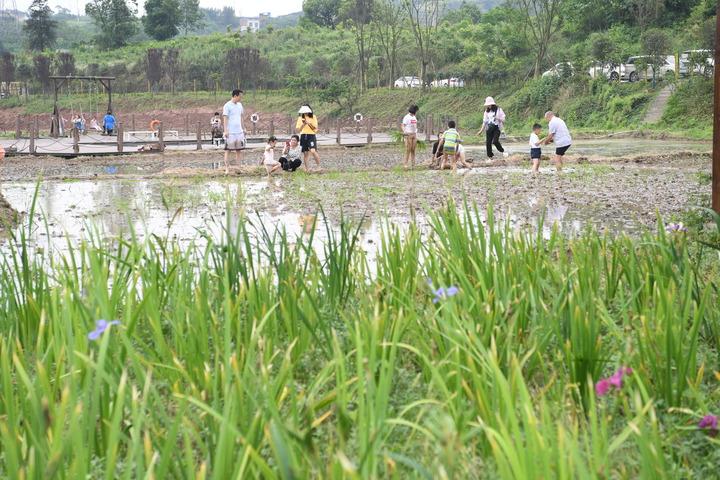CHONGQING/HARBIN, Sept. 23 (Xinhua) -- "Start!"-- as the referee's sonorous voice rang out, farmers in Qiping Village of southwest China's Chongqing Municipality started waving their sickles swiftly to cut the yellow rice straws, with a group of young foreigners cheering from the crowds beside the paddy fields.
The scene played out at a harvest competition organized as part of nationwide celebrations of the fourth Chinese farmers' harvest festival, which fell on Thursday.
More than 30 expatriates living in Chongqing were invited to take part in agricultural activities with farmers in the village. The activities included catching fish in the rice field, making handicrafts, removing corn kernels with hands, or being mere spectators.
"It is the first time for me to see how rice is harvested," said Mohammed Rahmoun, a 30-year-old Syrian architect. "The activities are fun and people are nice. I had a great time walking around and getting familiar with the local people and the village landscape."
In Gaoya Village, Tuqiao Township, more than 73 hectares of rice were waiting for collection while some harvested unhusked rice was awaiting further processing.
"It is hard to believe that these were deserted farmlands a few years ago, with weeds growing up to about one-meter height," said Long Siyong, Party secretary of Gaoya Village.
Things, however, changed with the introduction of a cooperative. The wastelands have now become stretches of fertile lands.
"Each mu (about 0.07 hectare) of farmland can bring a net profit of 300 yuan (about 46.4 U.S. dollars)," Long added.
Long said advanced agricultural machinery including plows, drones for spraying pesticide and machine harvesting have also injected new vitality into local agriculture.
"With the advent of farming machinery, we only need some 10 people to sow seeds in a 73-hectare area. For pest control, one drone can cover about 20 hectares of land in a day compared to one person spraying 2 hectares at most in one day previously," Long said.
A rice processing plant, funded by the local government, has been built in the village. It can cut costs, improve efficiency and generate more profit for local farmers.
Thousands of kilometers away in northeastern Heilongjiang Province, similar modernized farming techniques have been adopted by farmers.
Known as China's "grain barn," the province boasts the country's largest plantations of rice, corn and beans.
Zhao Qingjun, a local farmer, had three swathers roaring in his paddy fields spanning 27 hectares. Zhao said he will harvest the crops when the weather is good.
Farmers in Lanxi County of Heilongjiang embraced a bumper corn harvest in advance this year, thanks to adequate sunshine and precipitation.
"Since we have taken a series of measures such as recycling crop stalks in the fields and protecting the farms over the past few years, the organic content in the farmlands has increased. The yield this year is expected to reach 800 to 900 kg per mu," said Du Yadong, director general of a local corn plantation cooperative.
Initiated in 2018, the Chinese farmers' harvest festival coincides with the autumnal equinox each year, which is one of the 24 solar terms of the Chinese lunar calendar and usually falls between Sept. 22 and 24 during the country's agricultural harvest season.
China's total grain output consists of three parts -- early rice, summer grain and autumn production. Autumn grain crops, which include corn and middle- and late-season rice, account for the bulk of the grain production.
According to statistics, China had bumper harvests of both summer grain and early rice in 2021.
Summer grain output this year recorded an all-time high of 145.8 million tonnes, up by 2.97 million tonnes from a year ago, while the country's early rice output reached 28.02 million tonnes, up 723,000 tonnes from the level in 2020. Enditem




 A single purchase
A single purchase









